Servings 10
- Amount Per Serving
- % Daily Value *
- Total Fat 32g50%
- Saturated Fat 18g90%
- Cholesterol 160mg54%
- Sodium 340mg15%
- Potassium 130mg4%
- Total Carbohydrate 32g11%
- Sugars 25g
- Protein 8g16%
- Calcium 90 mg
- Iron 0.7 mg
* Percent Daily Values are based on a 2,000 calorie diet. Your daily value may be higher or lower depending on your calorie needs.
Note
A Classic New York Cheesecake is the gold standard of this dessert—rich, dense, creamy, and often taller than its counterparts.
It’s defined by its use of heavy cream (or sour cream) in addition to cream cheese, which provides that signature luxurious texture and subtle tang. Achieving this perfection requires precision, patience, and following a few key principles.
Essential Tips for Cheesecake Perfection
Baking a New York Cheesecake is less about complex steps and more about controlling temperature and technique to prevent the dreaded cracks and dense spots.
Temperature and Ingredient Control
- Cream Cheese Must Be Softened: This is non-negotiable. Cold cream cheese will result in lumps and requires over-beating to smooth out, which introduces excess air.
- Use Room Temperature Eggs: Cold eggs don't emulsify properly with the cream cheese mixture. Allow your eggs to sit out for at least an hour. They should be added last and blended minimally.
Mixing Technique (The Key to Preventing Cracks)
- Avoid Over-Mixing: This is the most critical rule. Beating the cream cheese and sugar vigorously or for too long whips air into the batter.
- Mix Low and Slow: Once the cream cheese and sugar are smooth, use the lowest speed on your mixer. Mix only until the ingredients are just incorporated, and stop as soon as the last streak of an ingredient disappears.
Baking Method (The Water Bath)
- Always Use a Water Bath (Bain-Marie): A water bath is essential for two reasons:
- Moisture: It fills your oven with steam, preventing the cheesecake's surface from drying out and cracking.
- Even Temperature: It heats the cheesecake gently and evenly from the sides, preventing the edges from baking and setting before the center, which is the main cause of uneven texture and cracks.
Cooling Process
- The Oven Method: Do not yank the cheesecake out of the oven immediately when it's done. one hour. This gradual cooling prevents the sudden temperature shock that causes the center to sink and crack.
- Final Chill: After the oven rest, remove the cheesecake, cool it completely on a wire rack at room temperature (about another hour), and then cover and transfer it to the refrigerator for a final chill of at least 6 to 8 hours, or ideally overnight. Do not attempt to slice it before it is fully chilled.
Serving and Presentation Tricks
A great cheesecake should be presented as perfectly as it tastes.
- The Hot Knife Slice: For clean, professional-looking slices, use a tall, thin-bladed knife. Dip the knife into a tall glass of hot water between each cut, wiping the blade completely dry before making the next slice.
- Remove the Pan Ring: Only remove the springform pan ring once the cheesecake is fully chilled. Run a thin, offset spatula or knife gently around the perimeter of the cake before un-clamping the ring to ensure a clean release.
- Simple Garnish: The beauty of New York Cheesecake is its simplicity. Garnish with a light dusting of powdered sugar, a few fresh berries, or a spoonful of vibrant, glossy fruit compote just before serving.
Flavor Variations
While the classic is divine, you can easily adapt the New York style with simple additions.
- Lemon/Citrus Zest: Add the zest of two whole lemons or oranges to the cream cheese mixture for a bright, refreshing lift that cuts through the richness.
- Espresso Swirl: Blend a few teaspoons of instant espresso powder with a small amount of hot water, then gently swirl streaks of this concentrated coffee mixture into the top of the batter before baking.
- Brown Butter Crust: Substitute half of the melted butter in the crust recipe with brown butter for a nutty, caramel note that complements the creamy filling.
Storage and Longevity
Proper storage ensures your effort pays off with a delicious cheesecake for days.
- Refrigeration: Cover it loosely with plastic wrap until it has fully cooled, then cover it tightly. It will remain delicious for 5 to 7 days.
- Freezing: Cheesecake freezes remarkably well.
Conclusion
The Classic New York Cheesecake stands as a testament to the fact that the finest desserts often rely on respect for the ingredients and meticulous technique rather than complexity. By prioritizing room temperature ingredients, mastering the low-speed mixing, and ensuring a consistent, humid baking environment with the water bath, anyone can achieve that flawless, creamy density that defines the classic. It's an investment of patience, but the result is a rich, towering, and unforgettable dessert.
Keywords:
Dense, Creamy, Graham Cracker, Rich, Tangy,
Did you make this recipe?
Pin this recipe to share with your friends and followers.

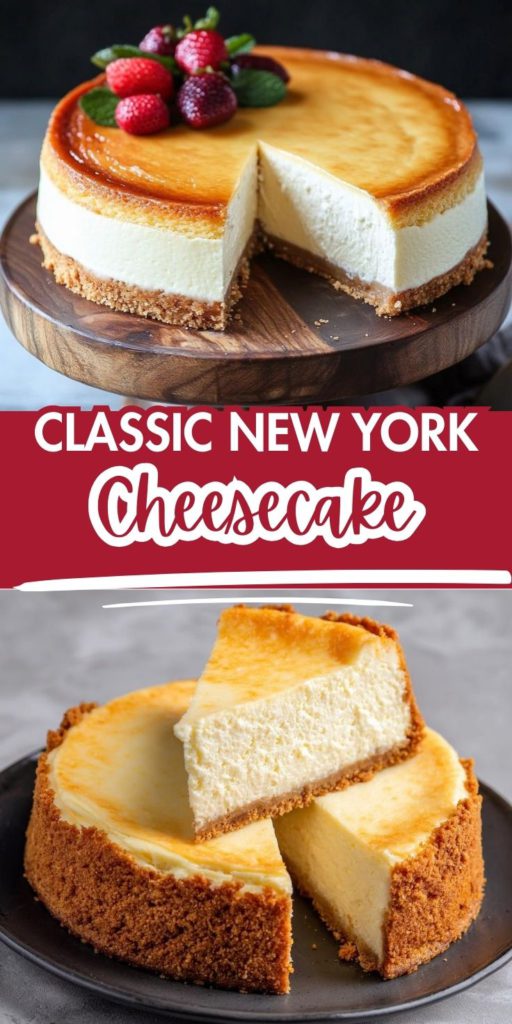
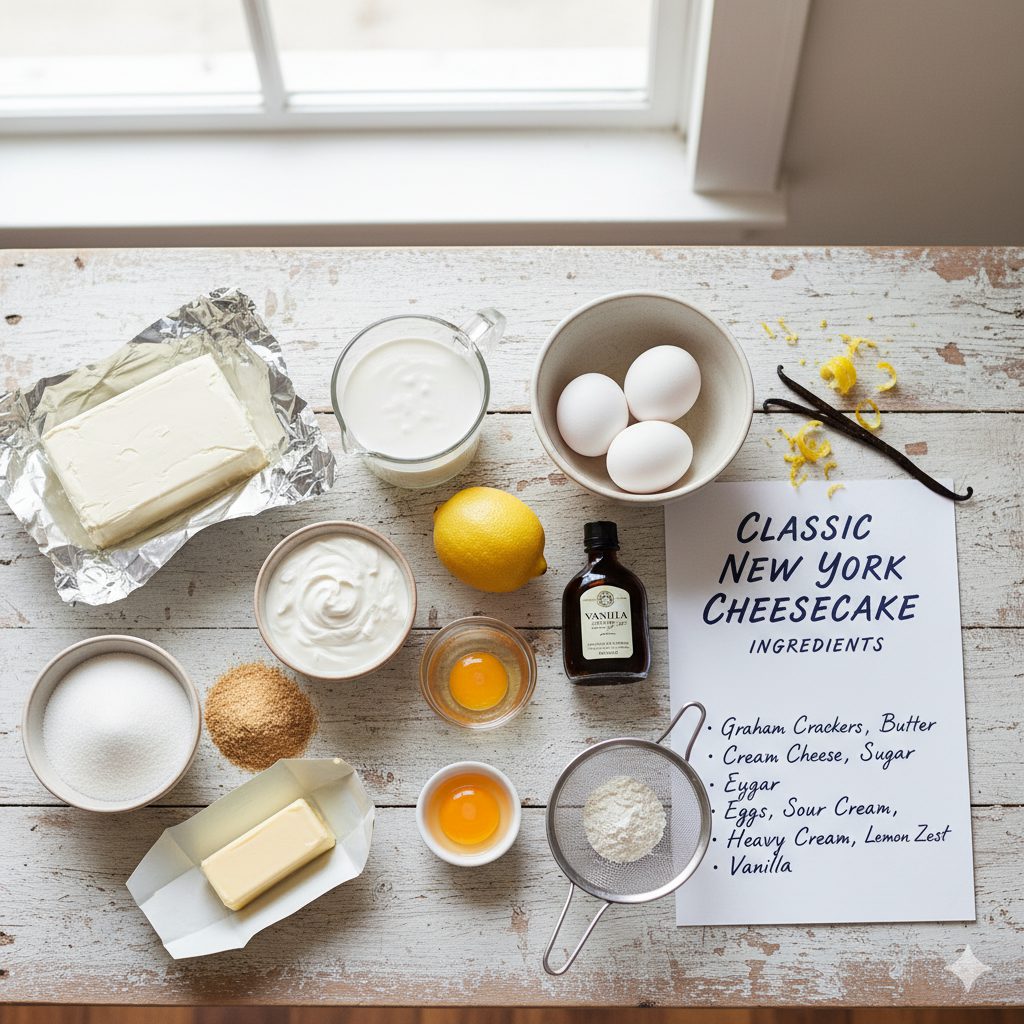 Take the mixture of butter and crumbs and force it down tightly into the base of your lined pan, creating a compact, uniform foundation before chilling.
Take the mixture of butter and crumbs and force it down tightly into the base of your lined pan, creating a compact, uniform foundation before chilling.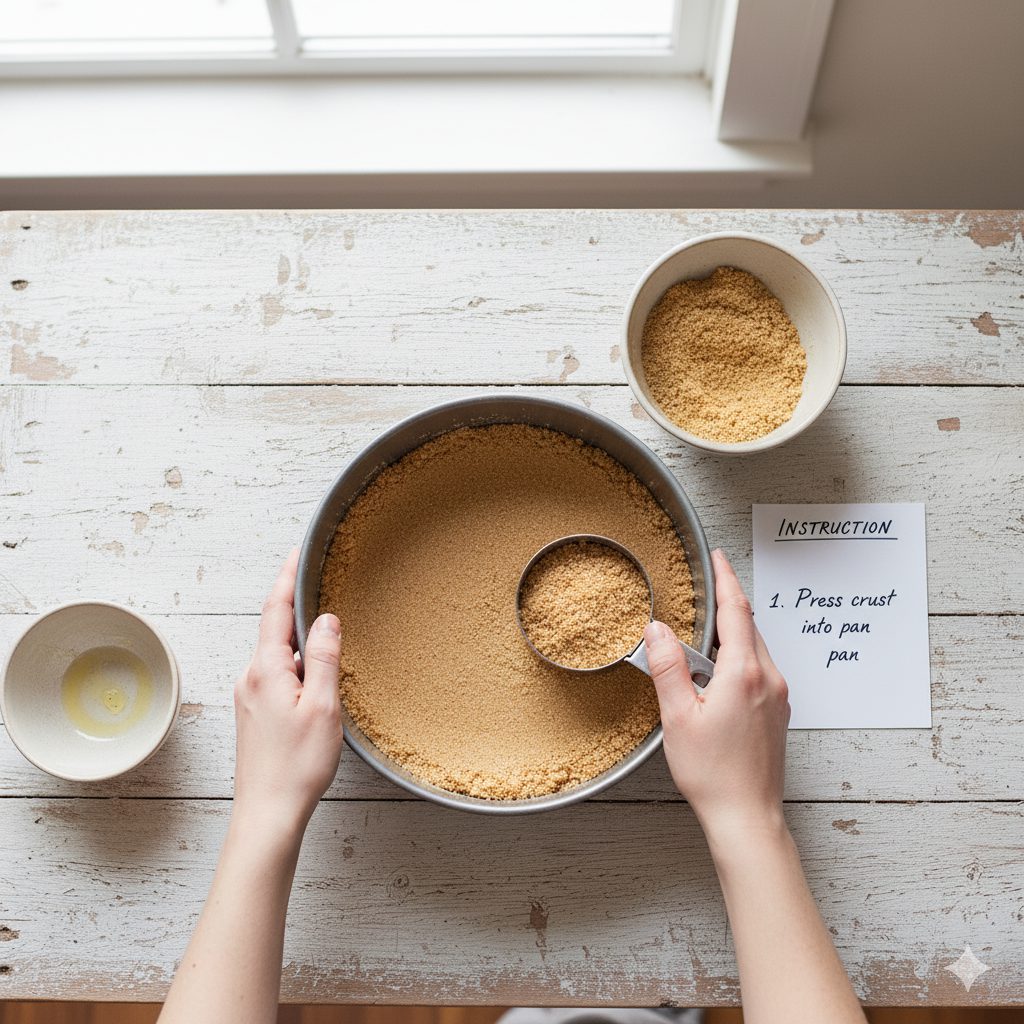 It is essential that your brick-style cream cheese be fully brought to ambient temperature—this step is mandatory to guarantee a lump-free, velvety filling.
It is essential that your brick-style cream cheese be fully brought to ambient temperature—this step is mandatory to guarantee a lump-free, velvety filling.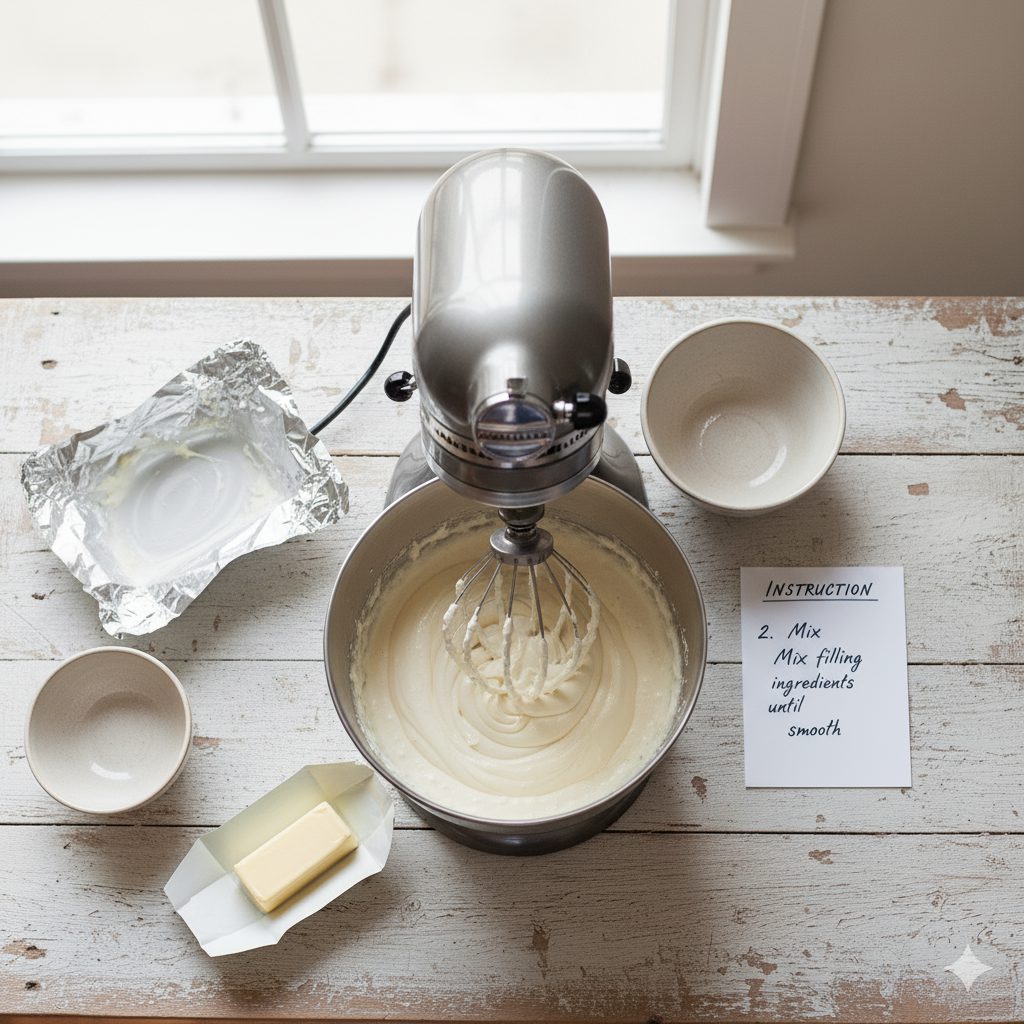 Continue stirring the batter solely until all components are integrated.
Continue stirring the batter solely until all components are integrated.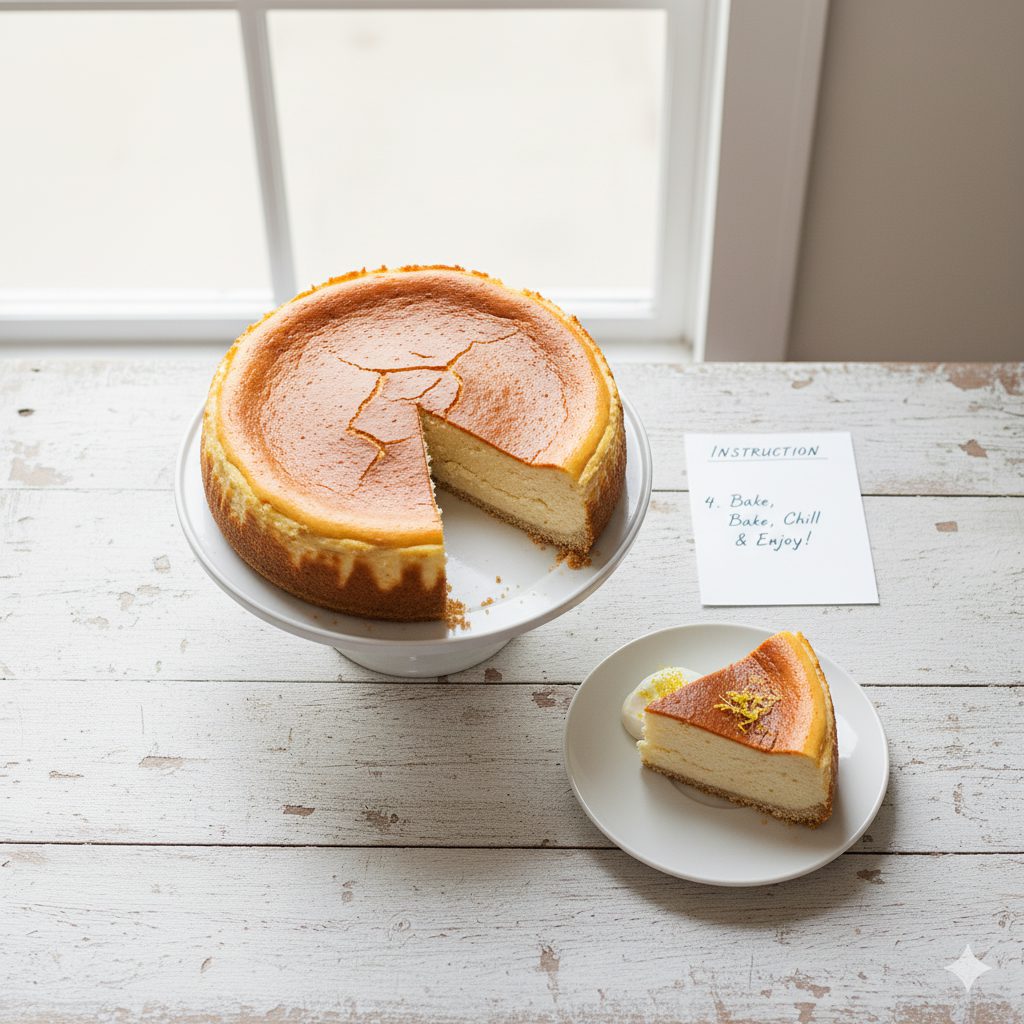 Following the extended cooling period in the oven, take the baked cheesecake out and permit it to finish cooling entirely on a metal rack at kitchen temperature (approximately another two hours).
Following the extended cooling period in the oven, take the baked cheesecake out and permit it to finish cooling entirely on a metal rack at kitchen temperature (approximately another two hours).

